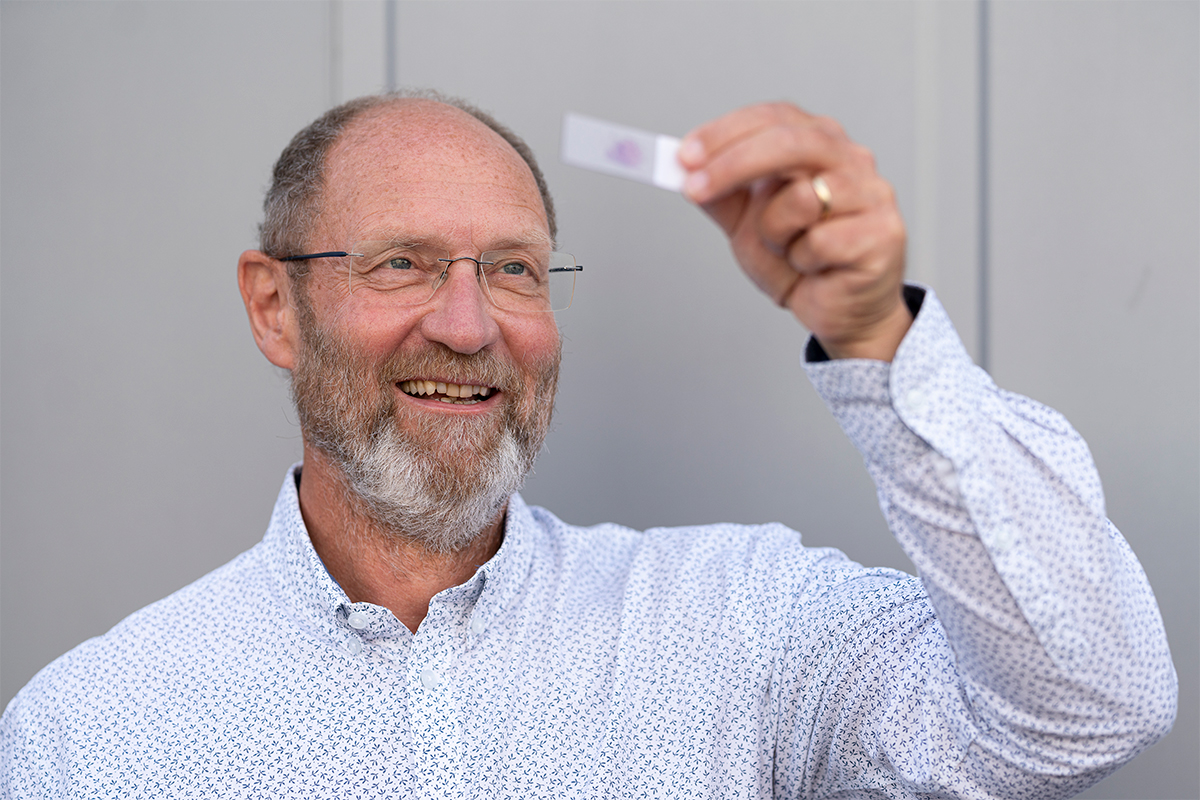Read the Sioux Source Magazine here
Click here >A new era is upon us in medicine. But when will that future actually become a reality? Bob van Gemen: ‘We are currently making impressive technological leaps in medtech, using intelligent software with advanced mathematics and precise robotics, among other things. However, the validation and market adoption of innovations is and will remain a long-term process.’
Bob van Gemen studied molecular biology and completed his postdoc in biotechnology in 1990. Today, he can look back on a rich career at the intersection of innovation and business development, working, among others, as General Manager Digital Pathology at Philips and as CEO of Primagen and ViroClinics. Eager to share his knowledge and experience, he is a board member of young promising companies. What were the important lessons he learned?
Clones of yourself
‘Developing and marketing innovative vaccines, medicines and medical devices takes a long time and a lot of money’, says Van Gemen. ‘If you want to make it, the whole team has to be right, from employees and management to investors. The latter have a limited shelf life. A different type fits every growth phase. You don’t easily find them in the poor Dutch investment climate. You want to move fast and have a limited time. So don’t operate in knowledge isolation. If others can do something better, outsource it. Don’t take on clones of yourself, look for added value. And on a personal level: it only succeeds with complete commitment and an absolute belief in success.’
Tipping point in medical domain
Van Gemen is currently associated with three newcomers. Virometics develops synthetic vaccines for the prevention and treatment of infectious diseases and cancer. GenDX provides molecular diagnostic tools for organ and stem cell transplantation. Xyall brings a breakthrough system for tissue dissection to the market. Do they represent an essential tipping point in medical diagnostics and treatments? Van Gemen: ‘With molecular testing, we can look at very sensitive, highly detailed DNA and RNA and accurately identify errors, for instance to detect and analyse cancer cells. So, the technological advances are amazing.’
Life and death
Cancer is a complex disease that can take on many forms. A pathologist looks at hundreds of thousands of cells under the microscope to come to a judgement. Van Gemen calls this human factor an ‘incredibly’ subjective element in the traditional pathological process. It’s a major problem when a proper diagnosis can be a matter of life and death. New imaging technology can make a big difference. By digitally capturing tissue samples at high resolution, they can be studied in detail, including together with colleagues, no matter where they are located.
First hour
‘Automation can add a lot of value’, says Van Gemen. ‘Xyall proves this with a system where a robotic arm scrapes tumour tissue from pathology slides with an accuracy of 100 microns. This tissue is input for genetic profiling of the tumour and determining the right therapy. A lot of knowledge comes together in this technology, including optics, algorithmics, motion control and data analysis. Sioux has incredible expertise in all these disciplines and plays an important role as co-developer and builder of the prototypes. In addition, Sioux has the drive and culture to make this kind of complex development a reality; it was also a first-time investor.’
Extraordinary times
Van Gemen calls the potential of companies like Xyall, Virometics and GenDX enormous; better diagnoses through greater objectivity and accuracy, more speed through automation and personalized therapies. ‘The bond between high-tech and medicine is getting stronger and stronger, also in the form of surgical robots and medical wearables, for example. Great progress is made using intelligent software, advanced mathematics, robotics, and communication technology. The validation and market adoption of such innovations is a matter of time. There is an evolution, not a revolution. But they are going to add a lot of value, regarding healthcare efficiency and affordability. And most importantly, they are going to save lives. It is wonderful that I still can contribute to that.’
